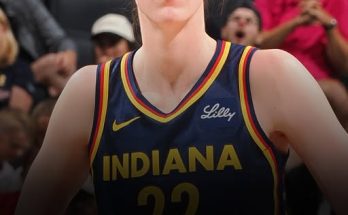There’s an unmistakable buzz that circulates through the halls of high school football programs in the South when a top recruit’s name is brought up. It’s not just about stats, highlights, or commitment letters. It’s about expectations, community pride, and the unspoken weight that teenage phenoms carry when they’re seen as the next big thing. Boo Carter, the standout athlete from Tennessee, has embodied all of this. But as news circulates that Carter has missed team activities this summer and was reportedly in California over the weekend, questions naturally follow—not just about eligibility or loyalty, but about how we navigate the development and decisions of young athletes in today’s complex landscape of sports, opportunity, and identity.
Boo Carter isn’t just a name among dozens of D1-bound athletes in the 2025 class. He’s an electric playmaker, an athlete who can dominate on both sides of the ball. Whether it’s as a defensive back locking down elite receivers or taking handoffs and making defenders miss with jaw-dropping footwork, Carter has proven he has that rare blend of athleticism, vision, and swagger that makes college scouts take notice. Tennessee football fans had already begun to rally behind him, hopeful that he would be one of the foundational pillars in an emerging new era for the Volunteers.
But just as quickly as his name rose in prominence across recruiting rankings and social media, the recent news of Carter missing team activities sent a ripple through Tennessee’s sports community. It’s not uncommon for athletes to be absent from summer conditioning or events due to personal reasons, family vacations, or even rehab for injuries. Yet, what makes Carter’s absence intriguing is the nature of his reported whereabouts—California.
Now, the phrase “in California” might seem harmless on its face. After all, players often train in different states, participate in elite camps, or visit family. However, when it’s accompanied by missed team activities and no official word from Carter or the program, it invites speculation. Is he training with private coaches out West? Is there a possibility of transferring schools, despite eligibility rules? Or is there a more personal reason for his absence?
High school football in Tennessee, especially when you’re a player of Carter’s caliber, is more than a seasonal commitment. It’s a full-time lifestyle. Teams depend on summer workouts to build chemistry, set tone, and prepare physically and mentally for the grueling fall ahead. It’s also when coaches evaluate new schemes, identify leaders, and enforce accountability. Missing these critical periods doesn’t necessarily disqualify someone from being an impact player, but it does put a wrinkle in the team’s plans—particularly when the absent player is one of the most talented and visible on the roster.
There’s also a broader educational opportunity here to understand how modern recruiting and exposure systems have changed the traditional high school sports dynamic. Gone are the days when the majority of development happened exclusively within the school framework. Today, 4- and 5-star athletes often participate in multiple offseason circuits, including 7-on-7 tournaments, invite-only showcases, and combine-style events held in cities like Atlanta, Dallas, Las Vegas, and yes—California. Private trainers, NIL (Name, Image, Likeness) strategists, and personal branding advisors have become part of an athlete’s extended support network. For some players, these offseason events offer greater long-term value than local team conditioning.
That reality can create friction between local high school expectations and the broader ambitions of a national-caliber recruit. Coaches want buy-in and presence. They expect leadership from their stars. And teammates, many of whom don’t have access to elite resources, can sometimes feel alienated when a peer operates on a different plane. This doesn’t mean Carter is selfish or disloyal. It means the expectations placed on these teenagers have become deeply complicated.
It’s also important to address the issue of eligibility. The report states that Boo Carter would be unable to play for another team this fall, implying that any potential move—especially across state lines—would come with consequences. That’s true in most states, including Tennessee. High school athletic associations have regulations in place to prevent athletic transfers being used as loopholes for team-stacking or competitive imbalance. If a player moves without a legitimate reason—like a change in legal guardianship, home relocation, or school closure—they can be ruled ineligible for a year.
This underscores how significant Carter’s California presence is. If he were merely visiting, training, or vacationing, the implications are minor. But if his stay involves anything beyond temporary engagement—such as school enrollment, tryouts, or relocation—it could trigger serious consequences not just for his high school eligibility, but for his reputation as well. Any move made now would be under intense scrutiny from both state athletic officials and media outlets watching for potential violations.
At the heart of the matter is the need to understand young athletes as more than performers on the field. Boo Carter is, first and foremost, a young man navigating complex terrain. Between the glare of recruitment, the pressure of representing an entire community, and the evolving demands of building a personal brand in an NIL-dominated world, players like him are asked to wear far too many hats.
In many ways, Carter is emblematic of the new generation of elite high school athletes. He is navigating a post-COVID world where exposure is currency, where NIL deals can legally begin in high school, and where national media platforms spotlight teenage talent in ways once reserved for college or professional stars. The idea that Carter could be working on an NIL opportunity, or filming content, or training under a specialized coach in California isn’t just plausible—it’s increasingly common.
What complicates the narrative is the lack of transparency. Silence breeds speculation. When neither Carter nor his camp nor his high school program offer public clarity, the story becomes open to interpretation. Fans wonder if he’s distancing himself from the program. Coaches are left to adjust their game plans. Recruiters begin to reevaluate how they interpret commitment. And teammates, possibly counting on him to lead them into battle this fall, might feel a subtle breach of trust.
That’s not to say Carter owes the public every detail of his life. Teenagers deserve privacy, even public figures like him. But when your athletic presence carries such weight in your school, city, and state, absence becomes a conversation.
On a developmental level, Carter’s situation also poses an important question: how should schools, coaches, and institutions support young athletes who operate within this dual reality—where one foot is in the local community and the other is in the national spotlight? The answer likely requires a shift in both culture and infrastructure. Schools must adapt to support these athletes not just academically and athletically, but personally. That means recognizing mental health strain, managing public image pressures, and helping families navigate the labyrinth of modern recruiting.
Perhaps the broader takeaway is that Boo Carter’s summer should not be treated simply as a mystery to be solved or a scandal to be dissected. Instead, it’s a case study in how modern high school sports culture continues to evolve in response to technology, branding, and shifting values. His story, whatever the details ultimately reveal, opens a door to deeper questions about what we expect from young athletes, and whether our current systems are built to support those expectations.
One can’t ignore that a part of this also stems from a football culture that venerates loyalty and team cohesion. In places like Tennessee, where high school football is part of the cultural fabric, there’s an ingrained belief in showing up—being present, grinding through the offseason, bonding with teammates under the July sun. So when a player appears to step outside that mold, eyebrows are raised.
But perhaps the true value lies in teaching young athletes that it is possible to manage both worlds: to be present for your team while pursuing individual opportunities. To train with world-class resources but still respect your hometown roots. To chase dreams without forgetting who’s watching you back home. If Boo Carter can master that balance, he’ll be more than a star recruit—he’ll be a role model for a generation of athletes navigating the same waters.
The story of Boo Carter is still unfolding. Maybe he was in California for something entirely non-football related. Maybe he’s already back in Tennessee, preparing to rejoin his team with a renewed focus. Or maybe the next few weeks will bring answers that reshape what we expect from him and others like him.
What remains clear, however, is that his journey is about more than one summer, one missed workout, or one flight to California. It’s about the complex reality of what it means to be young, gifted, and caught in the ever-tightening spotlight of American sports. We owe it to players like Boo Carter to ask better questions—not just about where they are or what they’re doing—but about how we can better support their growth, guide their choices, and ensure they have space to thrive both on and off the field.
Until then, the focus should shift from judgment to understanding, from speculation to support. Because long after the headlines fade and the tweets die down, what remains is a young man with dreams to chase, talent to fulfill, and a story still being written. Let’s make sure that story gets the nuance, care, and patience it truly deserves.



